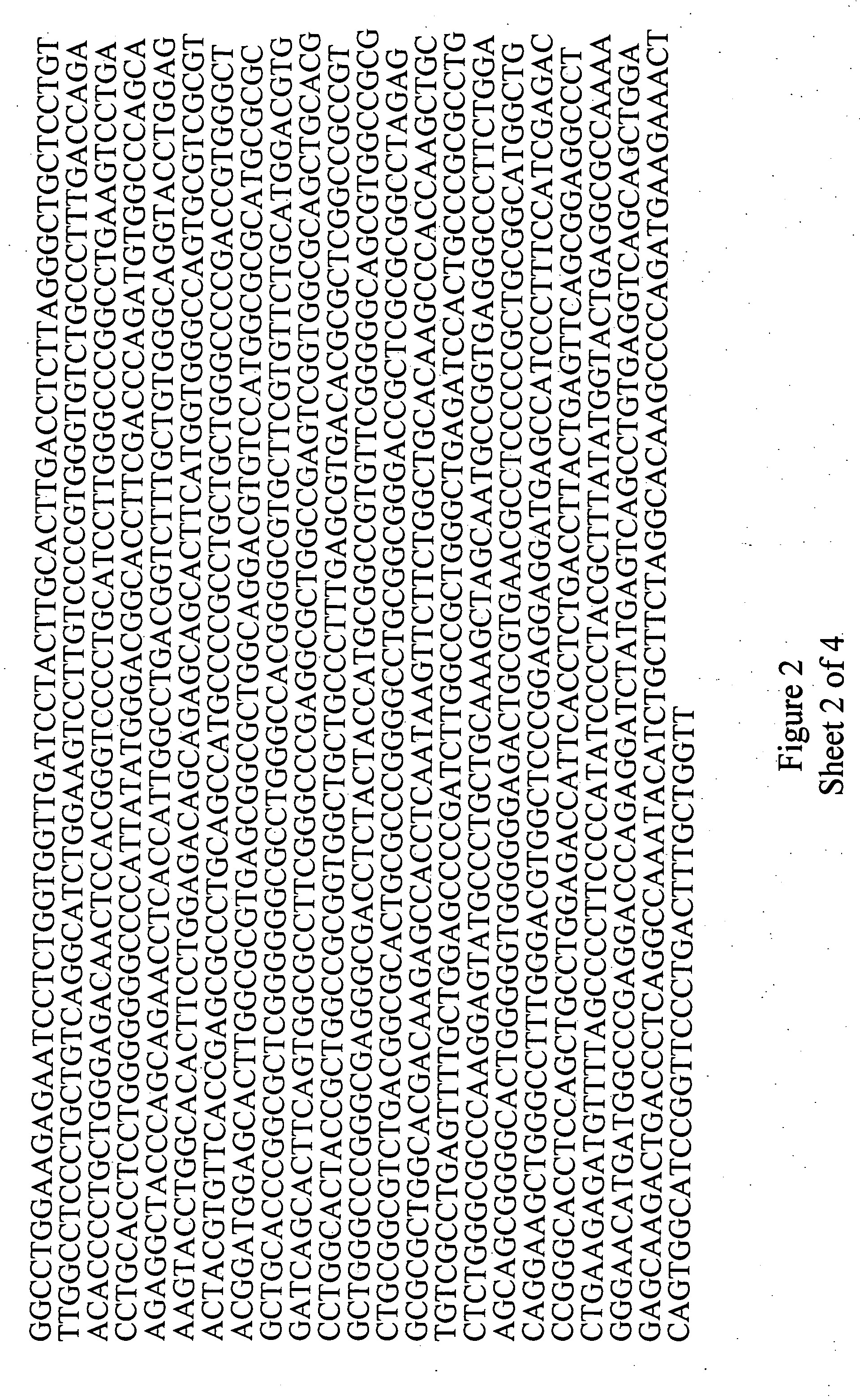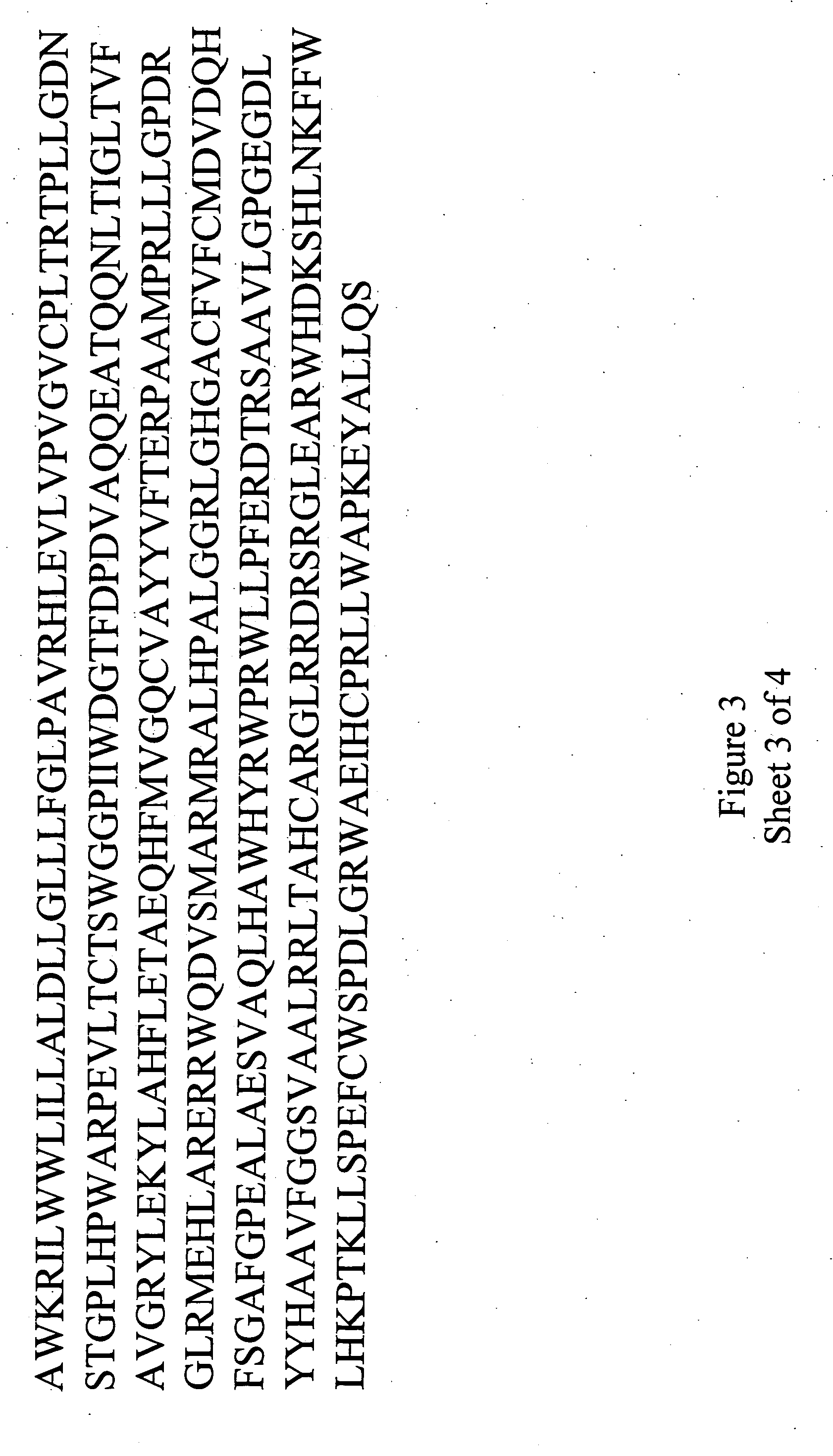Porcine Isogloboside 3 synthase protein, cDNA, genomic organization, and regulatory region
a technology of igb3 and igb3, which is applied in the field of igb3 synthase protein, cdna, and genomic organization, can solve the problems of low rate of long-term success due to host versus, unacceptable human donor organs, and serious risks of infection and cancer, so as to reduce the amount of immunogenic gal and reduce the immune rejection of the transplanted cell
- Summary
- Abstract
- Description
- Claims
- Application Information
AI Technical Summary
Benefits of technology
Problems solved by technology
Method used
Image
Examples
examples
I. Cells and Tissues.
[0164] Porcine fetal tissues, including aorta, brain, and liver, were obtained from a local slaughterhouse. Samples to be used later for isolation of DNA or RNA were flash frozen in liquid nitrogen, whereas aortic tissue was treated with collagenase in phosphate-buffered saline and pig aortic endothelial cells (PAEC) were isolated. PAEC were maintained in Dulbecco's modified Eagle medium (DMEM, Gibco, Grand Island, NY), 10,000 U of heparin sodium (Elkinns-Sinn, Inc., Cherry Hill, N.J.), 15 mg endothelium growth supplement (Collaborative Biomedical Products, Inc., Bedford, Mass.), L-glutamine, and penicillin-streptomycin. Culture flasks were kept loosely capped in a 37° C. incubator with an atmosphere of 5% CO2.
II. Isolation of Nucleic Acids.
[0165] To isolate porcine genomic DNA, PAEC were grown to confluence in tissue culture flasks, trypsinized briefly at 37° C., and pelleted by centrifugation. High molecular weight porcine DNA was recovered using a standa...
PUM
| Property | Measurement | Unit |
|---|---|---|
| temperature | aaaaa | aaaaa |
| ionic strength | aaaaa | aaaaa |
| Tm | aaaaa | aaaaa |
Abstract
Description
Claims
Application Information
 Login to View More
Login to View More - R&D
- Intellectual Property
- Life Sciences
- Materials
- Tech Scout
- Unparalleled Data Quality
- Higher Quality Content
- 60% Fewer Hallucinations
Browse by: Latest US Patents, China's latest patents, Technical Efficacy Thesaurus, Application Domain, Technology Topic, Popular Technical Reports.
© 2025 PatSnap. All rights reserved.Legal|Privacy policy|Modern Slavery Act Transparency Statement|Sitemap|About US| Contact US: help@patsnap.com



